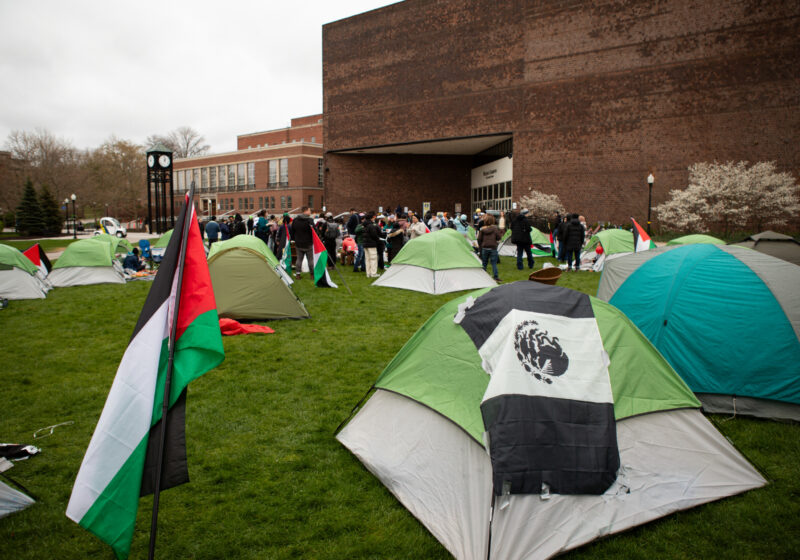Some questions precede the technology required to answer them. Neutrinos, a type of subatomic particle, continue to evade even our most sensitive instruments.
Senior physics and computer science major Sam Tetef is doing computational physics research with Dr. Steve Manly as part of the Deep Underground Neutrino Experiment, or “DUNE.” They are interested in characterizing neutrinos because of the broad impact the particles may have on the very existence of matter.
A historically accepted tenet of particle physics is that every particle has an antiparticle, and together they cancel each other out in perfect symmetry. But if that’s true, matter wouldn’t be able to exist, because antimatter would effectively erase it. “Something broke the early symmetry between matter and antimatter in the universe,” Manly said. “This gives origin to the predominance of matter. Without it, we wouldn’t be here.”
Neutrinos may behave in contradiction to this “supersymmetry” theory. A better understanding of these strange particles could help scientists understand the fundamentals of why matter exists.
Neutrinos are neutral subatomic particles that come in three distinct “flavors,” which they oscillate between. Scientists have yet to discover exactly when and why they do this.
These particles rarely react with normal matter. “The neutrino has to collide head-on with an atom [in order to interact with it],” Tetef said. “It’s very unlikely.”
“Another cool thing about neutrinos is that they’re so small they’re almost massless, and they don’t have charge,” Tetef said. This makes these mysterious particles difficult to observe and characterize.
“The only way to detect them is to have a whole lot of neutrinos and a big detector,” Manly said. “So that’s the game we play.”
DUNE is a collaborative project between the Fermilab near Chicago and the Sanford Underground Research Facility in South Dakota. A neutrino beam will be channeled between the labs via an 800-mile underground tunnel, to be detected and characterized before and after their journey.
The researchers are curious about why and how neutrinos oscillate between the three “flavors,” and how the propagation of motion affects this. The detector will be able to distinguish their flavor before and after the beam travels between labs.
Manly predicts that the first neutrino beam data will be generated by 2026, with the help of thousands of collaborators and a nine-figure budget.
Although she finds neutrinos fascinating, Tetef most enjoys her research’s technical aspects, such as the computational elements.
The work Tetef does is aimed at designing an optimal neutrino detector, a task that is well-suited to her. “I like problem solving,” she said. “You can look at a visual image of what you did and that’s satisfying.”
Tetef is also a member of the Society of Physics Students and Women in Physics, and is a peer advisor for the physics department. Upon graduating in the spring, she hopes to pursue a Ph.D. in physics, focusing on computational and machine learning.
Tetef already had a background in physics and computer science when she began working on DUNE, but she found that she gained skills there that she couldn’t learn through coursework. “Research is way more applied, classes are very theoretical,” Tetef said. “Getting into a lab, you learn way more than you can in the classroom.”



